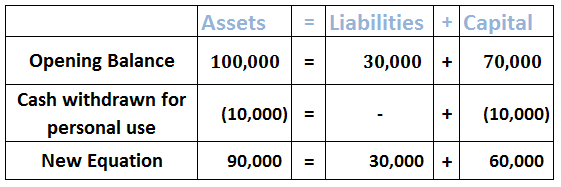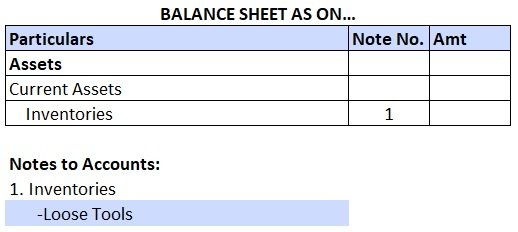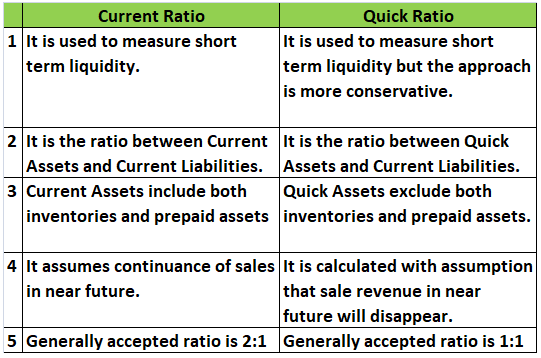Introduction Often cash is withdrawn by the owner or proprietor of a business for his or her personal use. Such withdrawal of cash is an outflow of capital from business and it is known as drawings. The accounting treatment of cash withdrawn for personal use is expressed in the accounting equation aRead more
Introduction
Often cash is withdrawn by the owner or proprietor of a business for his or her personal use. Such withdrawal of cash is an outflow of capital from business and it is known as drawings.
The accounting treatment of cash withdrawn for personal use is expressed in the accounting equation as shown in the example below:

It is shown as a negative figure under both assets and capital heading. I will be explaining why it is so.
Accounting Equation
The accounting equation represents the relationship between assets, liabilities, and capital of an entity whether profit oriented or not, according to which, the total assets of a business equals to the sum of its total capital and total liabilities.
Assets = Liabilities + Capital
This equation holds good in every monetary transaction or event like the event given in the question.
Cash withdrawn for personal use
We know every transaction affects two accounts. In this case, too, the ‘cash withdrawn for personal use’ affects two accounts. Cash withdrawn for personal use is known as drawings.
Let’s see the journal entry for drawings of cash from business:

Here the drawing account is debited because it is a contra-equity account i.e. it is a mirror image of the capital account or opposite of the capital account. Here the cash account is an asset account; hence it is credited as it is reduced.
As drawings represent the outflow of capital from the business, it is written off from the Capital account in the balance sheet.
Hence, in the accounting equation, the drawing amount is deducted from the Asset side and from the capital side, indicating a balance.
It does not appear in the statement of profit or loss despite having a debit balance because it is not an expense account.
See less







Any person, company, or organization that owes us money is a debtor. The amount that is owed to us is called debt. When you are unsure if a debtor is going to pay back the amount owed to you, then a provision for doubtful debts is created. Here, the debtor may or may not pay back the amount owed. WhRead more
Any person, company, or organization that owes us money is a debtor. The amount that is owed to us is called debt. When you are unsure if a debtor is going to pay back the amount owed to you, then a provision for doubtful debts is created. Here, the debtor may or may not pay back the amount owed. When the debts owed to us is irrecoverable, it is termed as bad debts.
Provision for doubtful debts may become a bad debt at some point. Usually, companies keep a small portion of their debtors as a provision for doubtful debts in accordance with the prudence concept that tells us to account for all possible losses. Provision for doubtful debts is a liability whereas bad debts are recorded as an expense.
Journal entries for Doubtful debts and bad debts are as follows:
EXAMPLE
If the balance in the debtors’ account shows an amount of Rs 20,000 and 5% of debtors are treated as doubtful, then Rs 1,000 is recorded as a provision for doubtful debts. This amount is deducted from debtors in the balance sheet.
Now if Rs 400 was recorded as actual bad debts, then it is deducted from the provision for doubtful debts instead of debtors. Further another 400 is added back to provision for doubtful debts to maintain the percentage.
See less